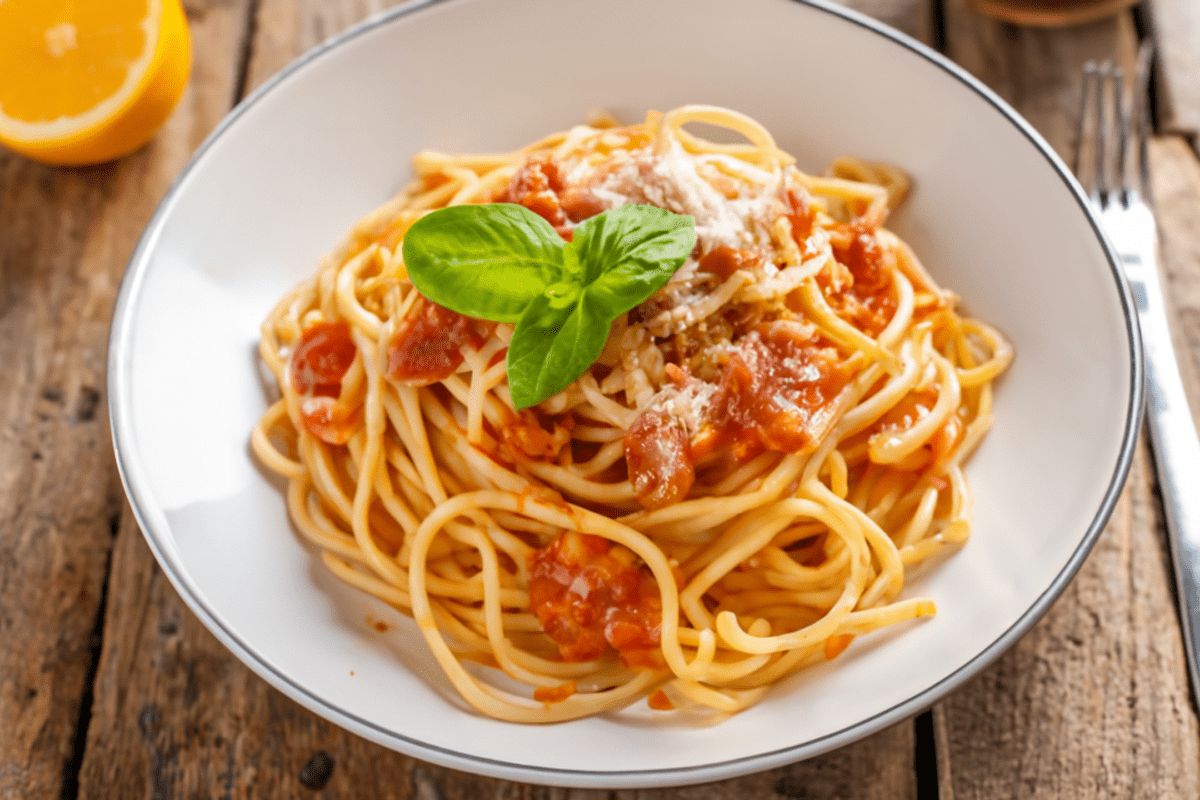Spaghetti is one of the most popular dishes around the world, but understanding its calorie content is essential for maintaining a healthy diet. Whether you’re counting calories for weight management or just curious about how it fits into your nutritional goals, this guide breaks down the calories in spaghetti and how different factors affect its overall nutritional value.
Nutritional Breakdown of Spaghetti
A standard serving of cooked spaghetti (about 1 cup) contains the following nutritional values:
- Calories: 220
- Carbohydrates: 43g
- Protein: 8g
- Fat: 1.3g
This base amount can change depending on the type of spaghetti, preparation methods, and added ingredients like sauces or toppings.
Types of Spaghetti
whole wheat spaghetti is higher in fiber and typically has slightly fewer calories than traditional refined spaghetti. Additionally, gluten-free spaghetti may contain different calorie counts depending on the ingredients used, such as rice flour or corn flour.
For those looking to add a delicious yet low-calorie side dish to their meal, consider pairing spaghetti with something like a Caprese Salad. The lightness of the salad complements the carbohydrates in the pasta, balancing your meal.
Factors That Affect Spaghetti’s Calorie Count
Several factors influence the calories in spaghetti, including the type of pasta, cooking method, and portion size. For example, cooking pasta “al dente” can slightly reduce its glycemic index, which can be helpful for maintaining steady blood sugar levels.
Portion size is also key. A larger portion of spaghetti can quickly increase your calorie intake. Additionally, pairing your spaghetti with rich, calorie-dense sauces can drastically change its nutritional profile. For instance, spaghetti with Alfredo sauce can easily exceed 600 calories per serving.
If you’re considering making a hearty spaghetti dish like spaghetti with meatballs, it’s important to factor in the calorie count of the meat as well. You can refer to the Ultimate Guide to Ground Beef for tips on selecting leaner cuts of beef to reduce calories.
Spaghetti and Weight Management
One of the most common concerns people have is whether spaghetti causes weight gain. While spaghetti itself isn’t inherently fattening, large portions and calorie-heavy toppings like cheese and cream sauces can add up. To keep your meal healthy:
- Stick to appropriate portion sizes (around 1 cup cooked).
- Opt for whole wheat or gluten-free varieties for more fiber and fewer calories.
- Pair it with lighter, lower-calorie sauces, like marinara or a simple olive oil dressing.
For a healthier, low-calorie side dish to serve with spaghetti, try a flavorful Mexican rice dish. You can follow the Mexican Rice in Rice Cooker with Salsa recipe, which is easy to make and complements the flavors of pasta.
Calories in Different Spaghetti Dishes
Spaghetti can be served in many different ways, which can significantly impact its calorie count. Here’s a breakdown of some popular combinations:
- Spaghetti with marinara sauce: 260-280 calories per serving.
- Spaghetti with meatballs: 400-450 calories per serving, depending on the type of meat used.
- Spaghetti with Alfredo sauce: 600+ calories per serving due to the cream and butter content.
If you’re looking for healthier alternatives, consider using zoodles (zucchini noodles) or spaghetti squash, which are much lower in calories and carbs.
FAQs About Spaghetti Calories
How many calories are in a serving of cooked spaghetti?
A typical serving of cooked spaghetti (1 cup) contains approximately 200-220 calories.
What is the lowest-calorie pasta option?
Vegetable-based pastas like zoodles or spaghetti squash are the lowest-calorie options available.
Can spaghetti be part of a weight loss diet?
Yes, spaghetti can fit into a weight loss diet when consumed in moderation and paired with lighter sauces or vegetable-based alternatives.
How many calories are in spaghetti with sauce?
The calorie count varies depending on the sauce. For example, spaghetti with marinara sauce contains about 260-280 calories, while spaghetti with Alfredo can easily surpass 600 calories.
Conclusion
Spaghetti is a versatile and satisfying dish that can be enjoyed as part of a balanced diet. By being mindful of portion sizes and choosing healthier sauces and side dishes, such as Caprese Salad or Mexican Rice, you can enjoy your favorite pasta without consuming too many calories.
“Calories in Spaghetti Dishes”
Anchor Text: Learn more about the calorie content of various spaghetti dishes at Nutritionix.
Suggested Placement: In the section discussing the calorie content in different spaghetti dishes.
“Glycemic Index of Spaghetti”
Anchor Text: Find out how different types of spaghetti impact blood sugar at Harvard Health.
Suggested Placement: In the Spaghetti and Glycemic Index (GI) section.
“Healthy Pasta Alternatives”
Anchor Text: Discover more healthy pasta alternatives at Verywell Fit.
Suggested Placement: In the section discussing zoodles and spaghetti squash as lower-calorie alternatives.

